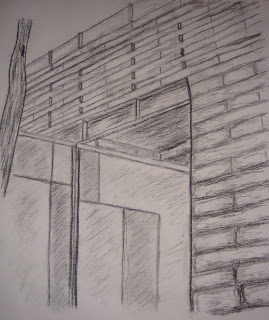Sunday, October 25, 2009
Tuesday, October 20, 2009
Friday, August 14, 2009
Animation Final submission
My animation was based around the concept of architecture, the natural environment and harmony between the two. I aimed to explore the link between the natural environment being surrounding trees and wildlife with the built environment and represent the interdependancy of the two. The way i chose to represent this concept was by creating an animation in which a sillhoete of a bird was to symbolise the natural environment,while the red centre building represents the built environment. Intially the animation starts off with a scene of a bird flying out from behind a transparent tree, then approaches the red centre west entrance, the bird then flys into the building then travels up through the stairway, as the bird travels through the scene depicts shrubs growing spontaneously from beneath the stairway, this scene also aims to depict the pattern of lighting experiencing in this section of the building. As the animation progreses the bird continues through the hallway of a selected level of the red centre then rests on the window sill, the columns beside the window sill gradually transform into tree trunks, then into entire trees, the bird then travels up the tree and back into the natural environment represented by a sun. This choice of leading the silhoette of the bird from the natural environment into the archtiecture back into the natural environment represents the ease in flow of movement and harmony between the two.
Monday, August 10, 2009
COMMUNICATIONS ARCH1142
· When an image is viewed the viewer’s eye travels over the image a small part at a time. This path depends on a range of things including light, tones, distinctive shapes and subjects.
· Visual elements are used to guide to viewers eye around the image. Generally along the path of a line.
· The movement of the eye throughout an image generates implied lines. An implied line may be defined by the mental connection of two or more elements that are visually attractive, similar shape or in close proximity to each other.
· The attempt to follow the direction of a subject’s gaze in an image to see what the subject is looking at creates an implied line. A moving object implies a line of travel.
· If implied lines enclose an area they define implied shape. Implied line and shapes can carry the same associations as visible ones. E.g. an arrangement of interesting objects in an image may form a circle. Also an arrangement implying a triangle could give a stable feel to an image.
Here are a few examples of implied line, implied shape and viewer attraction:
 a) The implied line from the boys mouth leads to the forming bubble
a) The implied line from the boys mouth leads to the forming bubble
a) The implied lines are illustrated by the orange and purple lines.

a) The implied line is leading to the main subject of the image.





































